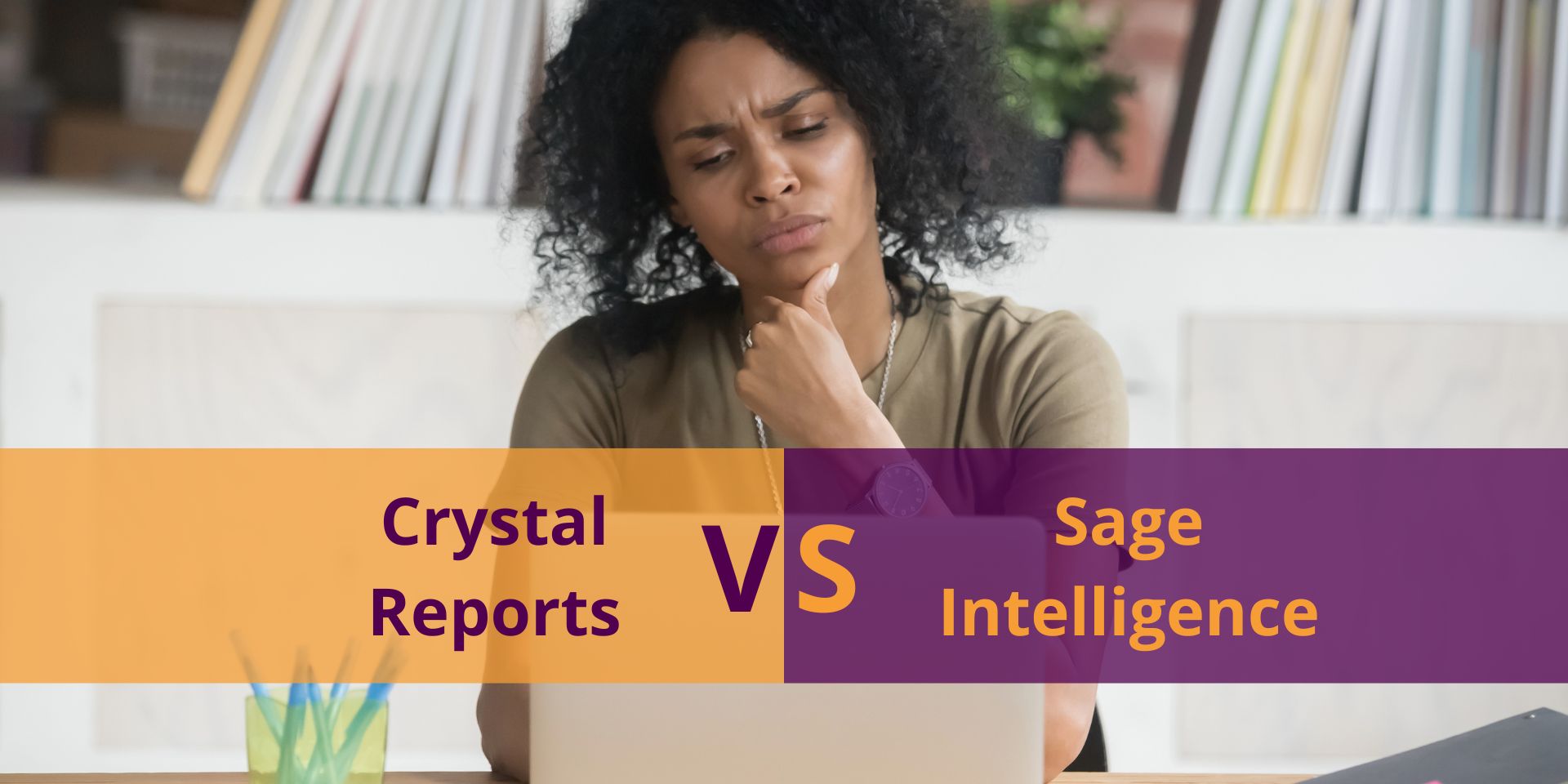
In the era where data is king and 49% of those surveyed are saying analytics helps them make better decisions, 16% said it enables better key strategic initiatives and 10% said it helps them improve relationships, then using the right business intelligence (BI) software becomes critical. Unlocking the full power of your data means you have the challenge of choosing the right system for your team’s needs. This can sometimes be confusing, but this diversity can also be used as a strength if applied correctly.
Crystal Reports and Sage Intelligence (a financial reporting tool integrated with Sage 300) each have their strengths and choosing the right one depends on your specific reporting needs and the desired outcomes of the business. This is a strategic choice between two options which, not to oversimplify, but can depend on whether the priority is form customization & standard reporting (Crystal Reports) or in-depth analysis, dashboards, and Excel-based dynamic reporting (Sage Intelligence). So, which BI tool is right for you? Let’s do an in-depth comparative analysis to help get you started on the right track!
Primary Use
Crystal Reports is where invoices get glammed up! It’s used for designing and customizing forms such as invoices, AP checks, purchase orders, and order confirmations. It's also the go-to tool for standard accounting and auditing reports in many systems.
Customization Focus
It’s not just about beauty though - we need brains too. The main strength of Crystal Reports lies in its ability to also spice up the layout with whatever custom things you might need. It offers detailed customization for forms, allowing businesses to incorporate specific branding elements like logos and layouts.
Data Handling and Reporting
Additionally, Crystal Reports is adept at handling data connections and field selections, making it ideal for businesses that require precise data representation and layout in their reports. Crystal is here to make your business reports rock stars of data representation.
Primary Use
Now it’s Sage’s turn to show off its moves… Think of Sage Intelligence as the superhero of spreadsheets. It excels in analysis, dashboards, consolidations, and scheduled reports. It's particularly useful for reports that combine different modules and those intended for review in Excel.
Analysis and Dashboards
Do you need deep data analysis? Sage Intelligence is your go-to. It stands out for its ability to create dynamic, data-rich dashboards and perform in-depth data analysis, offering invaluable insights for strategic decision-making.
Flexibility and Scheduling
If flexibility is more your thing, look to Sage. Sage Intelligence offers great flexibility for businesses needing to schedule reports and create consolidations from various data points. Its powerful integration with Excel makes it a robust solution for interactive and dynamic reports.
We’re not trying to turn this into a competition over what tool is better than the other. Instead, we want to appreciate what each of them has to offer and what they can bring to the table. Think of Crystal Reports and Sage Intelligence as the Sherlock Holmes and Dr. John Watson of the reporting world. Each has its unique capabilities that can be beneficial depending on various factors for your specific reporting needs.
|
Crystal Reports |
Sage Intelligence |
|
Focus: |
Focus: |
|
Key Differences:
|
Key Differences:
|
|
Pros: |
Pros: |
|
Cons: |
Cons: |
If that brings up more questions than answers, try this:
While Crystal Reports excels in form customization and branding, Sage Intelligence stands out in comprehensive data analysis and advanced reporting capabilities.
It’s clear these tools are more than just basic reporting solutions; they are gateways to a new era of business intelligence.
With only 32% of business executives saying they can create measurable value from their data, its crucial you choose the right tool. No matter what BI software you end up with, here are some final words of wisdom for mastering Crystal Reports and Sage Intelligence:
In harnessing the full potential of Crystal Reports and Sage 300’s Sage Intelligence, you're not just improving your reporting processes; you're elevating the way your business interacts with data. Let these tools empower you to tell compelling stories with your data, stories that drive your business forward. This is not just the end of a blog; it's the beginning of a new chapter in your business intelligence narrative So, stay tuned for more in our upcoming blogs where we do a deep dive into both solutions, discussing the benefits of a business intelligence platform like Sage Intelligence and the great ways Crystal Reports leads in BI reporting
Equation Technologies
United States: 533 2nd Street Encinitas, CA 92024
Canada: #301 - 220 Brew Street Port Moody, BC V3H 0H6
Phone: 866.436.3530 • E-mail: info@equationtech.us
Equation Technologies ©2016